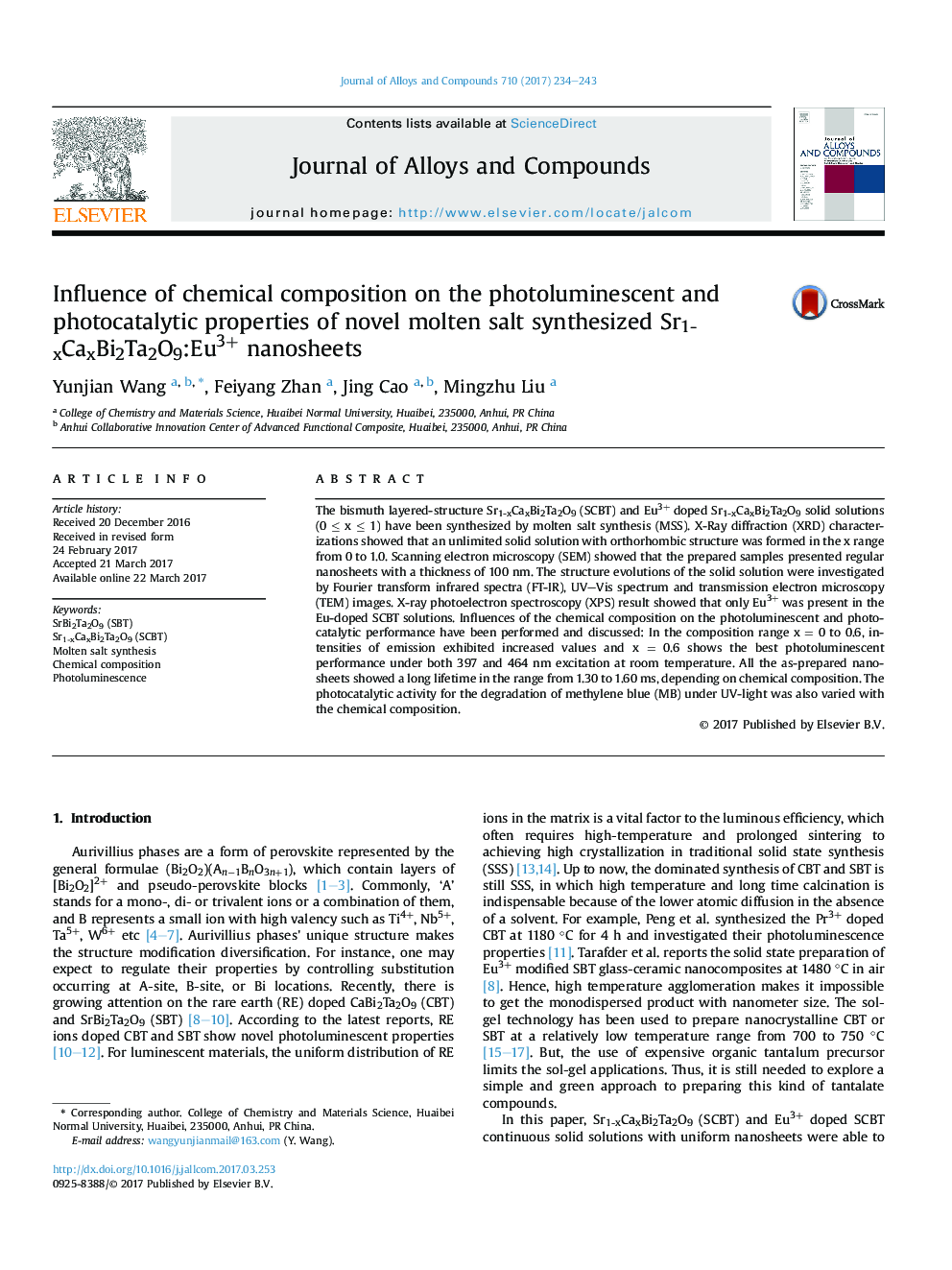| Article ID | Journal | Published Year | Pages | File Type |
|---|---|---|---|---|
| 5461104 | Journal of Alloys and Compounds | 2017 | 10 Pages |
Abstract
The bismuth layered-structure Sr1-xCaxBi2Ta2O9 (SCBT) and Eu3+ doped Sr1-xCaxBi2Ta2O9 solid solutions (0 â¤Â x â¤Â 1) have been synthesized by molten salt synthesis (MSS). X-Ray diffraction (XRD) characterizations showed that an unlimited solid solution with orthorhombic structure was formed in the x range from 0 to 1.0. Scanning electron microscopy (SEM) showed that the prepared samples presented regular nanosheets with a thickness of 100 nm. The structure evolutions of the solid solution were investigated by Fourier transform infrared spectra (FT-IR), UV-Vis spectrum and transmission electron microscopy (TEM) images. X-ray photoelectron spectroscopy (XPS) result showed that only Eu3+ was present in the Eu-doped SCBT solutions. Influences of the chemical composition on the photoluminescent and photocatalytic performance have been performed and discussed: In the composition range x = 0 to 0.6, intensities of emission exhibited increased values and x = 0.6 shows the best photoluminescent performance under both 397 and 464 nm excitation at room temperature. All the as-prepared nanosheets showed a long lifetime in the range from 1.30 to 1.60 ms, depending on chemical composition. The photocatalytic activity for the degradation of methylene blue (MB) under UV-light was also varied with the chemical composition.
Related Topics
Physical Sciences and Engineering
Materials Science
Metals and Alloys
Authors
Yunjian Wang, Feiyang Zhan, Jing Cao, Mingzhu Liu,
